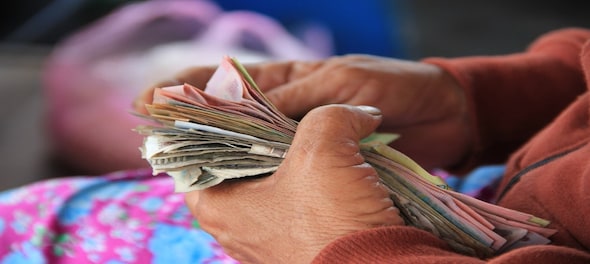
‘Bitcoin barrels into ‘death cross’ as backdrop darkens’ screamed a headline a few weeks ago, in what would have sounded to the casual observer as a terrible precursor of doom for the cryptocurrency. Around the same time, famed author Nassim Nicholas Taleb -- who once praised Bitcoin as “the beginning of something great: a currency without a government, something necessary and imperative” – claimed the cryptocurrency was worth zero.
The Bitcoin story has caught nearly everyone’s imagination. Proposed in a whitepaper by the pseudonymous ‘Satoshi Nakamoto’ in 2009, it promised to be the next step in the evolution of the modern monetary system. But has it, and will it be? Or is it, as some of its critics say, a Ponzi scheme?
Before we get to that, here’s a quick recap of how we got here.
The evolution of currencies
The above summary of centuries of evolution of the modern monetary system may be oversimplified but there’s a common link to each development. Which is to function effectively as ‘money,' currencies should demonstrate three values. First, and most importantly, they must serve as a ‘store of value’. The last thing the user of a currency wants is to have to buy a packet of food at double the price that he or she paid last week. Two, they must be widely accepted as currencies. Three, such transactions should ideally be executable quickly and without too much transaction costs.
Fiat currencies solve the first two problems to a great extent. When governments (or central banks) print currency with the promise that it will be treated as money and not just a piece of paper, that promise is successfully concluded with nearly every transaction you or anyone else makes in their lifetimes (with the rare exception of economies that printed too much money and ran the value of their currencies into the ground).
Cryptocurrencies promise to improve the experience for all users on all three counts though that promise is far from achieved. The current volatility in their prices means that they are not yet a ‘store of value’. Since central banks and the government would look to keep control over the supply of currencies, the day cryptocurrencies will start getting accepted as currencies will be when enough people see their value and start believing in them. (To that extent, all currencies -- gold, fiat and crypto – meet the first condition of what defines a Ponzi scheme. They derive their value because people believe in them. Gold has also met the second condition, by crumbling under its own weight several times in history. Fiat currencies very rarely do so.)
And three, while bitcoin does make it easy for a person based in, say, Salem, Tamil Nadu, to send money to his relative in Robertsdale, Alabama, the settlement of the transaction, through the mining process, has transaction costs – just not to the user.
And then there is the anonymity that Bitcoin offers, by virtue of not having a central authority overseeing transactions -- though it is far from clear if that’s a good or a bad thing.
Whatever price you see of Bitcoin on the ticker is comprised of two parts: the promise to change the monetary system, as well as people who want to profit off the promise’s hype. If you’re in Camp Two, remember that the price could turn against you as quickly as it has gone up over the past few years. But if you’re in Camp One, as argued in a previous piece, you need to have a solid view on whether that promise will prove to be a dud or a revolution. Otherwise, you‘re in Camp Two and don’t know it.
Oh, and the ominous-sounding ‘death cross’? It’s not really a reliable signal of anything.
Nazim Khan keeps an eagle eye on developing trends in financial markets and in the technology space. On economic ideology, he recently switched allegiance from Ayn Rand to Thomas Piketty after failing to spot the invisible hand despite looking hard
(Edited by : Abhishek Jha)
First Published: Jun 30, 2021 4:54 PM IST
Check out our in-depth Market Coverage, Business News & get real-time Stock Market Updates on CNBC-TV18. Also, Watch our channels CNBC-TV18, CNBC Awaaz and CNBC Bajar Live on-the-go!


Gonda Lok Sabha election: BJP's Kirti Vardhan Singh takes on Beni Prasad Verma's granddaughter Shreya
May 19, 2024 10:19 PM
Faizabad Lok Sabha election: Can Ayodhya Ram Temple strengthen BJP's stronghold here?
May 19, 2024 10:16 PM
Amethi Lok Sabha election: Can BJP's Smriti Irani retain the Congress bastion she won in 2019?
May 19, 2024 10:12 PM
Rae Bareli Lok Sabha Election: Can Rahul hold on to this Gandhi family bastion?
May 19, 2024 10:09 PM

